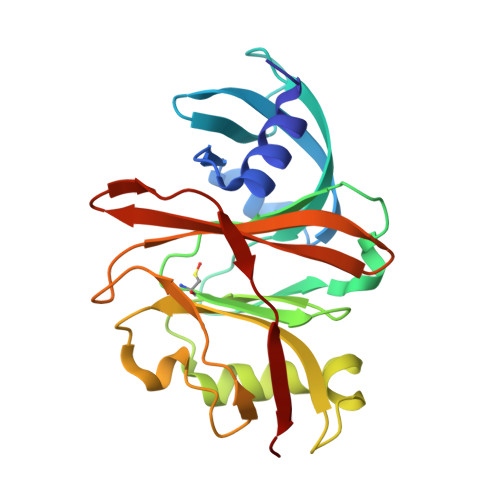A Burkholderia pseudomallei toxin inhibits helicase activity of translation factor eIF4A.
Cruz-Migoni, A., Hautbergue, G.M., Artymiuk, P.J., Baker, P.J., Bokori-Brown, M., Chang, C.T., Dickman, M.J., Essex-Lopresti, A., Harding, S.V., Mahadi, N.M., Marshall, L.E., Mobbs, G.W., Mohamed, R., Nathan, S., Ngugi, S.A., Ong, C., Ooi, W.F., Partridge, L.J., Phillips, H.L., Raih, M.F., Ruzheinikov, S., Sarkar-Tyson, M., Sedelnikova, S.E., Smither, S.J., Tan, P., Titball, R.W., Wilson, S.A., Rice, D.W.(2011) Science 334: 821-824
- PubMed: 22076380
- DOI: https://doi.org/10.1126/science.1211915
- Primary Citation of Related Structures:
3TU8, 3TUA - PubMed Abstract:
The structure of BPSL1549, a protein of unknown function from Burkholderia pseudomallei, reveals a similarity to Escherichia coli cytotoxic necrotizing factor 1. We found that BPSL1549 acted as a potent cytotoxin against eukaryotic cells and was lethal when administered to mice. Expression levels of bpsl1549 correlate with conditions expected to promote or suppress pathogenicity. BPSL1549 promotes deamidation of glutamine-339 of the translation initiation factor eIF4A, abolishing its helicase activity and inhibiting translation. We propose to name BPSL1549 Burkholderia lethal factor 1.
- Department of Molecular Biology and Biotechnology, Krebs Institute, University of Sheffield, Sheffield S10 2TN, UK.
Organizational Affiliation:


















